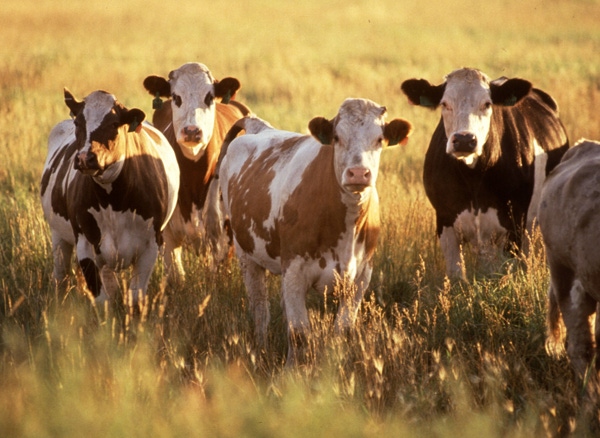August 1, 2011

“As uncomfortable as we are during the heat of the day, it is important to remember cattle generally do not handle heat as well as humans,” according to Dr. Rick Machen, Professor and Texas AgriLife Extension Service Specialist. Heat stress is a function of temperature, relative humidity, wind speed and solar radiation.
The core body temperature of cattle does not peak until two hours after the peak in ambient temperature, which often comes at five o’clock or later. Cattle need at least six hours to dissipate the heat accumulated during the day. Consequently, nighttime cooling is essential for managing heat stress. Warm humid nights with no breeze following a plus 100-degree day pose a real challenge for cattle.
Machen offered the following tips for managing livestock during times of potential heat stress.
Do not work cattle after 10 a.m. on potentially (heat) stressful days.
Do not work cattle in the evening of a heat stressed day.
Wait time in holding pens should not exceed 30 minutes.
Provide shade and plenty of clean fresh cool drinking water.
Do not allow extremely thirsty cattle free choice access to water. Though rare, water intoxication can happen and can quickly result in death.
Consider shifting supplementation and feeding schedules to daylight hours.
Do not feed large quantities of feed or high quality hay once daily. Heat associated with digestion can push heat stressed cattle over the edge.
Control biting flies (to minimize congregation of livestock).
In the advanced stages, heat stress is a medical emergency. Symptoms that warrant immediate attention by a veterinarian include: respiration rate above 100 breaths per minute, open mouth breathing with tongue protruding and pushing with flanks when breathing. Stockmen observing these symptoms should contact their veterinarian immediately.
As livestock owners develop drought management plans, they need not overlook the importance of protecting the natural resources. Dr. Machen said. “If the pasture has little forage to offer and managers are feeding livestock, they should seriously consider putting stock in well-watered and shaded small pastures or traps to protect the range/forage resources.”
You May Also Like




